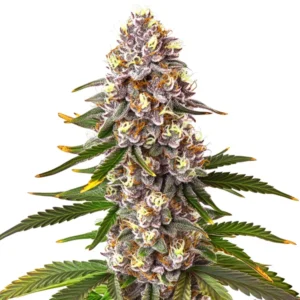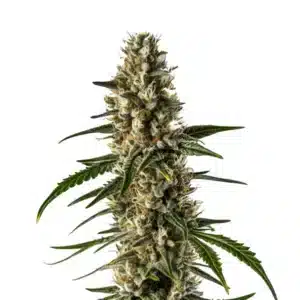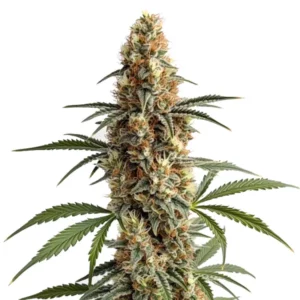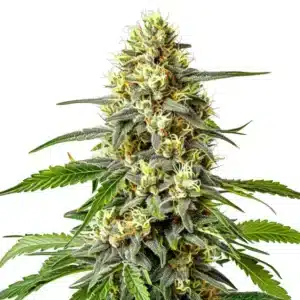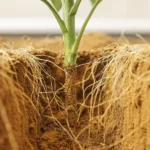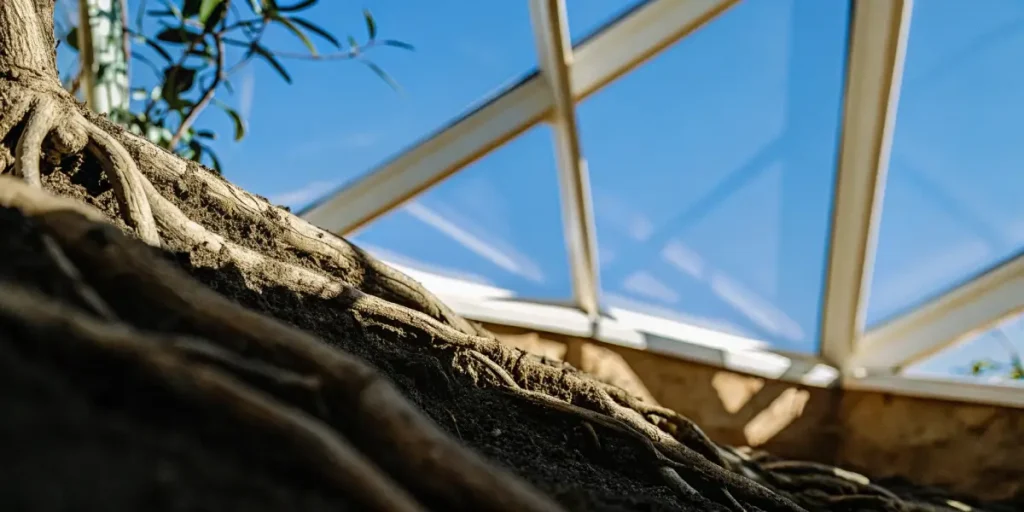
Cannabis Root System
The cannabis root system is a vital part of growing healthy plants. It’s responsible for absorbing water and nutrients, anchoring the plant, and storing energy. Whether you’re just starting out with your first cannabis seeds or you’re a seasoned grower, knowing how roots work can make a big difference in your success.
Healthy roots mean more vigorous plants and bigger yields. But what makes a root system healthy? It’s all about balance balancing water, nutrients, and air. A well-managed root zone is the key to a thriving cannabis plant. Let’s dive into how you can achieve that.
Recommended Strains
Mazar
|
|
THC | 20% (Medium) |
|
|
Type | Feminized |
|
|
Yield | Low |
|
|
Phenotype | 90% Indica / 10% Sativa |
Mazar Regular
|
|
THC | 15% - 19% (Medium) |
|
|
Type | Regular |
|
|
Yield | High |
|
|
Phenotype | 55% Indica / 45% Sativa |
Cannabis root system development can be influenced by several factors. From the right type of soil to effective watering techniques, each detail plays a part. One practical example is using fabric pots, which naturally enhance cannabis root system aeration, promoting a healthier growth environment.
Key Elements of Cannabis Root System
Root systems can be broken down into three main elements: structure, health, and nutrient uptake. The structure provides the physical foundation of the plant. A robust structure ensures that plants can stand tall and are less likely to topple over or break.
Improving cannabis root health is crucial for maximizing growth potential. Healthy roots are white, firm, and spread evenly throughout the growing medium. To achieve this, proper watering and avoiding over-fertilization are essential practices to follow.
The cannabis root system structure is intricately linked to the plant’s overall resilience against environmental stressors. A strong root system can help cannabis plants withstand drought conditions and resist diseases, making it a critical aspect of successful cultivation.
Knowing the dynamics of cannabis root system nutrient uptake allows growers to tailor their feeding schedules. By ensuring that roots have access to all necessary nutrients, the plant can perform photosynthesis more efficiently, leading to robust growth and higher yields.
Importance of Cannabis Root System Structure
The cannabis root system structure determines how well a plant can absorb water and nutrients. A well-structured root system will effectively transport these essentials from the soil to the plant. Without a good structure, plants can become weak and underdeveloped.
Roots should spread out evenly and deeply into the soil. This allows them to access more nutrients and water. For example, the roots of the “Gorilla Glue 4” strain from Blimburn Seeds benefit from a well-structured root system, leading to its famous potency and resilience.
Effective cannabis root system development hinges on providing an environment where roots can thrive. This involves using substrates that encourage root expansion while maintaining moisture retention, thus supporting the structure needed for optimal plant health.
By focusing on the cannabis root system structure, growers can optimize plant stability and nutrient uptake. This foundation is crucial for supporting the plant during the flowering phase, where nutrient demands are at their peak, ensuring a bountiful harvest.
Improving Cannabis Root Health
Healthy roots are essential for plant vitality. To improve root health, it’s important to maintain a balanced pH level in the soil. Cannabis prefers a slightly acidic environment, usually between 6.0 and 6.8. Regularly testing the pH can prevent nutrient lockout.
Over-watering is a common mistake that can harm root health. Roots need oxygen to thrive, and too much water can suffocate them. Allowing the soil to dry out slightly between waterings encourages deeper root growth, which is beneficial for strains like “Blue Dream” from Blimburn Seeds.
Implementing techniques for improving cannabis root health can lead to more resilient plants. This includes using organic amendments that promote beneficial microbial activity, thereby enhancing the root’s ability to access nutrients efficiently.
Another strategy is to incorporate cannabis root system aeration practices that prevent compaction and improve oxygen flow. These methods can significantly reduce the risk of root-related diseases and promote a thriving growing environment.
Cannabis Root System Nutrient Uptake
Nutrient uptake is a critical function of the cannabis root system. Roots absorb essential elements like nitrogen, phosphorus, and potassium, which are necessary for growth and development. A deficiency in any of these can lead to poor plant performance.
To optimize nutrient uptake, it’s vital to provide a balanced fertilizer regime. Over-fertilizing can burn roots and decrease their ability to absorb nutrients effectively. Regularly flushing the growing medium can help remove excess salts and prevent buildup.
Ensuring efficient cannabis root system nutrient uptake involves knowing the specific needs of your chosen strain. Some strains may require higher levels of certain nutrients, necessitating careful monitoring and adjustment of feed schedules.
Root health is directly linked to nutrient uptake efficiency. By maintaining optimal environmental conditions and addressing any signs of nutrient deficiency promptly, growers can ensure that the cannabis root system remains capable of supporting the plant’s growth demands.
Promos & Deals
Enhancing Cannabis Root System Aeration
Root aeration is crucial for healthy growth. Without adequate air, roots can’t breathe and will struggle to function. Aeration can be improved by choosing the right pot and soil type. Fabric pots, for instance, allow more air to reach the roots than traditional plastic pots.
Soil composition is another factor in root aeration. Adding materials like perlite or vermiculite to your soil mix can increase aeration, helping to prevent root rot and other issues. A well-aerated cannabis root system supports vigorous growth and larger yields.
Cannabis root system aeration not only aids in preventing root diseases but also boosts the plant’s metabolic functions. When roots receive sufficient oxygen, they can more effectively convert nutrients into energy, resulting in faster growth rates.
Innovative cultivation techniques such as using air pruning pots can further enhance cannabis root system aeration. These pots naturally air-prune the roots, leading to more fibrous root masses and subsequently healthier, more productive plants.
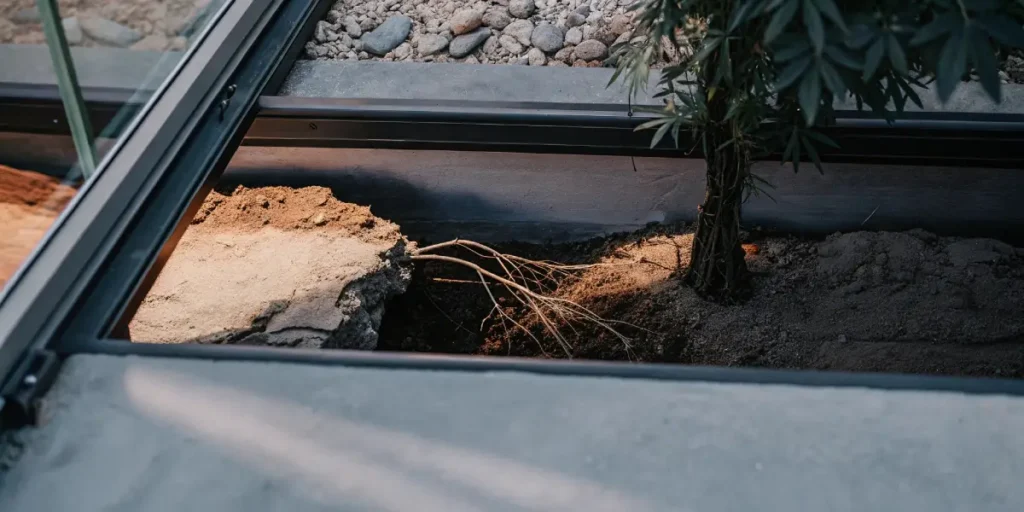
Tips for Boosting Cannabis Root System Development
There are several techniques to boost cannabis root system development. One effective method is root pruning. By trimming the roots slightly, you encourage them to branch out, creating a denser root system. This can lead to better nutrient uptake and stronger plants.
Using air stones in hydroponic systems is another way to enhance root development. They increase oxygen availability in the water, promoting faster root growth. This is particularly beneficial for hydroponically grown strains like “Purple Haze” from Blimburn Seeds.
Another valuable tip for boosting cannabis root system development is to use growth-promoting hormones. These substances can stimulate root growth, especially in the early stages of development, ensuring a strong foundation for the plant.
Monitoring root zone temperatures is also essential for optimal development. Roots thrive in a specific temperature range, and maintaining this can prevent stress, leading to more effective nutrient uptake and overall plant health.
Maximizing Cannabis Root System Potential with Proper Care
Proper care and attention can maximize the potential of your cannabis root system. It’s important to monitor your plants closely and adjust your care routine as needed. This includes watching for signs of stress, such as yellowing leaves or drooping stems, which can indicate root problems.
Using quality seeds from reputable sources like Blimburn Seeds ensures that you start with strong genetics. Strains with robust root systems, like “White Widow“, are more resilient and can offer higher yields if cared for properly.
Maximizing the potential of the cannabis root system involves regular observation and adjustment. By keeping a detailed log of environmental conditions and plant responses, growers can fine-tune their approach to meet the specific needs of their plants.
Employing sustainable practices, such as using organic fertilizers and implementing water-saving techniques, not only benefits the cannabis root system but also contributes to a more environmentally friendly growing operation.
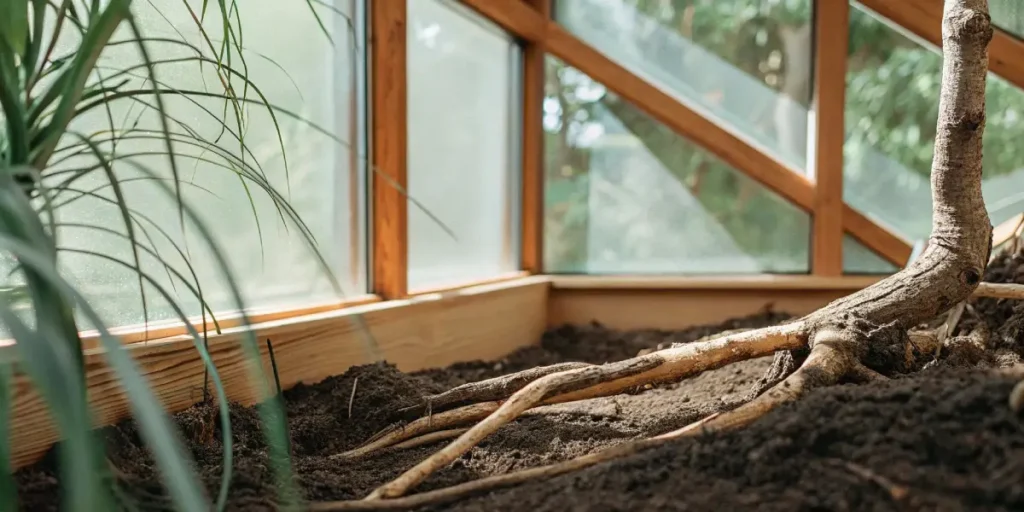
FAQs
What is the best growing medium for the cannabis root system?
The best growing medium for cannabis roots depends on your growing setup and personal preference. Soil is a popular choice for beginners due to its ease of use. It’s important to choose a well-draining soil mix and consider adding perlite or coco coir for better aeration.
For those using hydroponic systems, Rockwool or clay pellets can be excellent options. They provide ample aeration and support robust root development. Regardless of the medium, maintaining a balanced pH and nutrient level is essential for a healthy cannabis root system.
Exploring different growing mediums can greatly impact cannabis root system development. Each medium offers unique properties that affect root growth, nutrient availability, and overall plant health, allowing growers to tailor their approach based on their specific needs.
Experimentation with various soil amendments can lead to improved root performance. Organic matter, such as compost, can enhance microbial activity, while inert materials like sand can improve drainage and prevent compaction.
How can I prevent root rot in cannabis plants?
Preventing root rot starts with proper watering practices. Over-watering is a common cause of root rot, as excess moisture can lead to fungal growth. Allowing the soil to dry out between waterings helps to prevent this issue.
Ensuring good aeration is also crucial. Use pots that allow for drainage and soil amendments that improve airflow, such as perlite. Keeping your growing environment clean and free from excess humidity can further reduce the risk of root rot.
Implementing preventive measures against root rot is crucial for maintaining cannabis root system health. Regularly checking for signs of over-watering and adjusting watering schedules accordingly can make a significant difference.
Using biologically active soil amendments, such as beneficial fungi and bacteria, can also help protect roots from pathogens that cause rot, creating a more resilient root system that can withstand environmental challenges.
Why is my cannabis plant not absorbing nutrients properly?
If your cannabis plant isn’t absorbing nutrients effectively, it could be due to root damage or nutrient lockout. Check the pH levels of your soil or nutrient solution, as imbalances can prevent roots from taking up nutrients.
Another factor could be root-bound plants. If roots have filled the pot, they may struggle to absorb nutrients. Transplanting to a larger container can help. Ensure your feeding schedule is balanced and not too concentrated, as too much fertilizer can also impede nutrient uptake.
Addressing issues with cannabis root system nutrient uptake requires a comprehensive approach. Regular soil testing and monitoring of environmental factors can help identify and rectify any barriers to effective nutrient absorption.
Ensuring that the growing medium is not compacted and that roots have room to expand is critical. Providing conditions that promote root growth will enable the plant to access nutrients more effectively, supporting vigorous growth.
Can I trim cannabis roots, and how does it benefit the plant?
Yes, trimming cannabis roots can be beneficial. Root pruning encourages the plant to grow more lateral roots, which can enhance nutrient uptake and overall plant stability. It’s best done during transplanting, when you can trim away dead or excess roots.
This practice can be especially useful in container-grown plants that risk becoming root-bound. Regular root maintenance can lead to healthier, more productive plants over time, supporting a stronger cannabis root system.
Root trimming is a useful technique for managing cannabis root system development in confined spaces. It not only prevents roots from becoming root-bound but also stimulates new growth, which can improve the plant’s nutrient uptake capacity.
When performing root trimming, it’s essential to be gentle and precise to avoid causing damage. Properly executed, this practice can rejuvenate the root system, leading to a more vigorous and productive plant lifecycle.
What are the signs of a healthy cannabis root system?
A healthy cannabis root system is typically white or light tan in color and has a firm texture. Roots should spread evenly throughout the growing medium without any foul odor, which could indicate rot or disease.
Healthy roots will support vigorous plant growth, visible in strong stems and lush foliage. Regularly checking your root system and making necessary adjustments to your care routine can ensure that your cannabis plants remain healthy and productive.
Indicators of a thriving cannabis root system include a well-balanced nutrient profile in the growing medium and the absence of pests or diseases. Regular inspections can help catch potential issues early, maintaining root health.
Observing plant behavior can also provide clues about root health. A healthy root system will typically result in quick recovery from stressors, such as transplant shock or nutrient deficiencies, showcasing the plant’s resilience.




